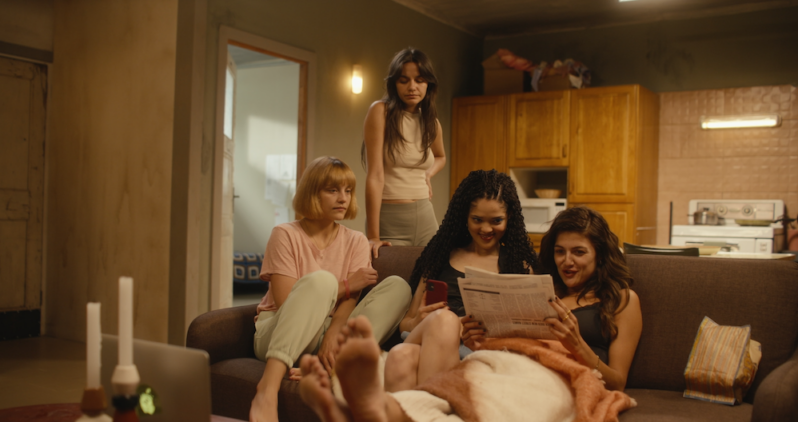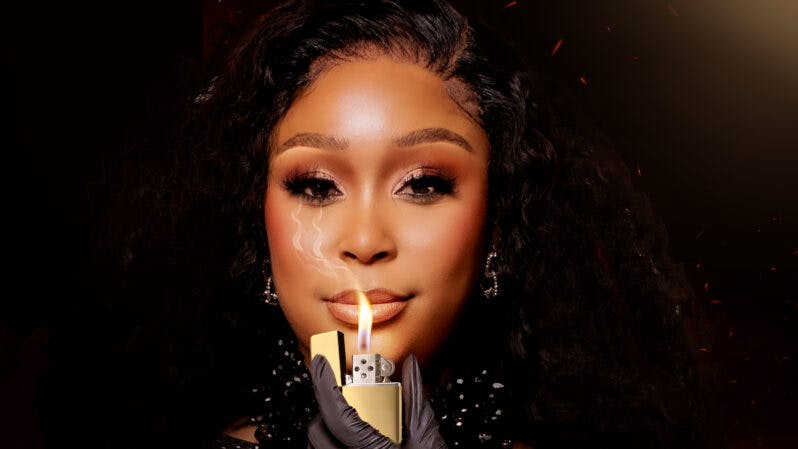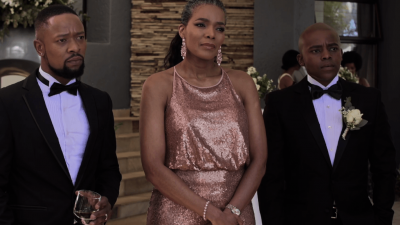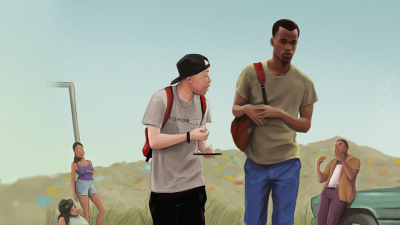19 March 2020
Lockdown: A slice of real life in women’s prisons
When the gates close behind you in the Thabazimbi Women’s Correctional Facility, you enter another world. This hard place is home to numerous female prisoners, convicted of crimes ranging from drug smuggling to robbery and murder. You have to watch your every step – if it’s not the prisoners stalking you, the prison’s staff and governor are as dangerous and even more corrupt.
This is the setting of Lockdown, the wildly popular South African drama whose fifth season is available to binge on Showmax. Every episode takes us further into the daily tribulations of its prisoners, each with a sad story beneath their tough exteriors. Whether it was MaZet killing her evil uncle, Tyson overcoming her brutal rape, or Monde trying to survive after her boyfriend framed her, each lady has a story to tell. But, foremost, they must survive in the harsh prison.
Lockdown shows a part of South Africa we rarely see. But how does it compare to the reality in women’s prisons?
Women in the prison system
South Africa has one of the largest prison populations in the world. Yet it also has one of the smallest female groups. According to AfricaCheck, there are 243 prisons in the country, 9 of which are for women only. Some jails also have facilities for female prisoners. The country has 161 054 prisoners, of which 4 300 are women.
“The country has 161 054 prisoners, of which 4 300 are women.”
AfricaCheck
There are two types of incarceration: those awaiting trials and those serving their sentences. Lockdown takes place in the latter space. In this context, the show avoids some of the harsher elements of jail life in SA. Our awaiting-trail facilities are much worse and more overcrowded than sentenced prisons. In 2015, Constitutional Court Justice Edwin Cameron wrote about visiting a female awaiting-trial section:
“The remand cell visited was in as poor a condition as the male remand cells. 94 women were crowded into a poorly aerated room. The women shared beds or slept on the floor on thin mattresses. The mattresses were stinking. There was no working toilet, a clogged sink drain and only cold water. They showed us tattered and torn sheets and blankets, which were infested with lice. They noted that the cell was also infested with cockroaches. Finally, the women complained that as remand detainees they were not afforded library books or magazines to read. Fights often broke out. They attribute this to extreme boredom.”
But even sentenced areas are very overcrowded. It’s not uncommon to see inmates sharing beds or the floor. The Kgosi Mampuru II Female Centre in Pretoria, for example, houses nearly a hundred more female prisoners than it was designed for. By comparison, Lockdown’s prisons are quite open, probably because it would have been impractical to shoot a television show if there are people everywhere.
Doing the time
Lockdown’s prisoners are in jail for several reasons. But while the show spreads those crimes more or less evenly among its cast, in reality, most women in SA are incarcerated for financial crimes – often to support others. Nearly half of the women who participated in UCT’s Hard Times report on female prisoners were the sole breadwinners in their families.
Following close behind are crimes of aggression, though here the picture is a bit murkier. Many women convicted of aggressive crimes such as murder are there because of abusive relationships.
“It is true that a substantial number of women end up in prison for killing their violent partner in self-defence,” said Ruth Hopkins, who wrote a series of articles on female prisoners for the Wits Justice Project. But they are not the majority – most female prisoners are in jail because they committed crimes to gain something.
That being said, according to Hard Times, more than two-thirds of women interviewed experienced abuse in their previous lives. There is a connection between violence against women and women going into crime.
“More than two-thirds of women interviewed experienced abuse in their previous lives”
Hard Times
Other crimes are in the minority. Drugs, which landed Monde in jail, represent a very small portion, as do soliciting and prostitution – crimes for which the smart-mouthed Vicky is doing time.

Violence in prison
Despite a high number of aggressive crime convicts, women’s jails are not particularly violent places. There is certainly violence. Yet shocking moments – such as when Tyson raped Monde in the first season – don’t happen often, said Prof. Lillian Artz, Director of the Gender, Health and Justice Research Unit at UCT:
“In my experience, based on being in prisons to interview women and working with those who work for or monitor prisons, rape and gang violence does not appear to be especially commonplace in South African women’s prisons. Understandably, in tight quarters, where large groups of women live and sleep, tensions do escalate, and fights – both physical and verbal – predictably break out between people and groups of people living in such confined and intense living conditions.”
What about abuse from the warders, something also often seen in Lockdown? This is a common complaint among male prisoners and does occur in women’s facilities. But not as frequently, mainly because most of the warders are also female. But, according to Hopkins, there is an activity called slanga: here, a female prisoner exchanges sexual acts with warders for favours.
Getting support
Lockdown highlights some of the differences between male and female jails. One of these is the visiting areas, which appears to be more spacious and sometimes also accommodate children.
In real prisons this can vary, said Hopkins: “The visitors’ facilities I saw – in Pollsmoor and Sun City [Johannesburg Correctional Centre] – were a lot more friendly than the men’s visiting areas. There was more stuff related to kids.”
South African prisons allow women to keep their children up to the age of two, though this is not always a safe arrangement. Pollsmoor Prison in Cape Town has a dedicated mother-and-baby house, but the situation is very different in Sun City. Here mothers frequently send their children to their families, fearing the prison’s unsafe and unhygienic facilities will do harm to their children.
The lack of support also extends to medical care, something that Lockdown touches on. Hopkins noted there was a real shortage of support for general medical services aimed at women:
“I don’t think medical assistance for women is particularly good. I’ve heard women do not get the appropriate care for menstruation and pregnancy and breast screening.”
Facilities typically have very few medical personnel, including doctors, dentists and psychologists. The latter is particularly important, considering how many imprisoned women are in jail directly or indirectly due to abuse.
“Psychological services for prisoners in South Africa, generally, are difficult to access due to the lack of mental health care practitioners, rather than the quality of them,” said Prof. Artz. “I found this to be particularly true in women’s prisons, where health and mental health services were woeful and inadequate based on the needs of women in prison. It’s a major concern for those advocating better conditions for women in prison in South Africa.”

Lockdown is a fictional drama and makes concessions for the sake of its location, story and filming. But it still has several striking similarities to real women’s jails in South Africa. It may not be as crowded, but much of the show rings true.
Above all, it’s a reminder that you never want to end up in jail and that, despite their crimes, the prisoners are still people who deserve our sympathy. They have a right to clean and safe facilities. In this sense, the struggles of Lockdown’s characters are the same as South Africa’s women inmates.
Finished all five seasons of Lockdown? Try these next.
The Roast of Minnie Dlamini: The roast everyone's been waiting on
Empini, coming soon
More Mzansi gold

MaBlerh to host The Real Housewives of Durban reunion for the second year in a row
MaBlerh to host The Real Housewives of Durban reunion for the second year in a row, featuring eight of Durban’s most ambitious and glamorous women. The reunion will air in two parts on 15 May and 22 May 2024.

Your initiation into the cool, chaotic world of Wyfie
Feel like we’re almost at midterms but you stopped going to class after you skipped a couple of lectures? Let’s swot up on Episodes 1-24 of Showmax Original Wyfie.

Must-watch trailer for The Showmax Roast of Minnie Dlamini
See the trailer for The Showmax Roast of Minnie Dlamini, premiering on Showmax this Friday, 26 April 2024.

Nambitha Ben-Mazwi stars in Showmax Original Empini
Multi-award winner Nambitha Ben-Mazwi leads new Showmax Original Empini. The action-packed drama series premieres on Showmax 23 May 2024.






